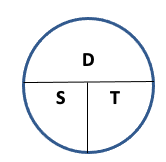Charts
Use chart number 18649 (Entrance to San Francisco Bay) for this classroom discussion.
Review and discuss the following chart title Information
- Chart Name
- Chart Number
- Sounding in Feet/Meters/Fathoms (what is a fathom)
- Define Mean Lower Low Water
- Scale
Locate a compass rose
- Identify the True Ring vs. the Magnetic Ring.
- Discuss Variation
Demonstrate and practice the use of parallel rulers and dividers
Use a compass to obtain a two bearing fix from the top of the stairs outside Tradewinds.
- Locate two “objects” on a chart that can be seen from the top of the “D” Dock ramp and have each participant take bearings of the objects. For example:
- The smoke stack on the Ford building bears approximately 240 degrees.
- The top of Nickols Knob bears approximately 272 degrees.
- The Southeast corner of the marina bears approximately 170 degrees.
- Transfer the bearings to the chart to determine the latitude and longitude of the top of the “D” Dock ramp
(37°54.75’ N 122°20.74’ W)
Discuss the relationship between Distance, Speed, and Time. When any two are known, the third can be calculated. Using the “D Street” Wheel can be a great help.
- The horizontal line means divide
- The vertical line means multiply
- Time is always expressed in hours and tenths of an hour (e.g. 2.4 hours equals 2 hours and 24 minutes)

Speed = Distance / Time
Time = Distance / Speed
Distance = Speed X Time
Boat Preparation
Have the class go to the boat assigned for the second day. They should do a complete review of boat systems and complete the check-out prior to arrival at the boat of the instructor. Place a 30 min time limit for “self-discovery.” The class should “teach-back” all boat systems to the instructor prior to departure for the day’s exercises.
As with yesterday, one person should do the online checkout and one person the paper checkout.
Boat Handling
Have each class participant conduct the same basic boat handling drills covered in day one.
Basic boat handling skills
- Departure from the slip
- Motoring clear of the fairway(s)
- In clear water, transition from forward to reverse, while maintaining a steady head to wind orientation
- Back & Fill (Fairway Turn) in clear water
- Back & Fill in a fairway
- Return to the slip
Returning To The Slip
In most cases, Windfall is used for the first day class, and the return to her slip is straight down the fairway. No “90 degree” turns are needed. The boat used for day two and three are located toward the middle of the fairway and require an approach down the middle and a 90 turn into the slip.
An easy tip to determine the correct timing of the turn follows:
- Approach the slip down the middle of the fairway. Do not stay close to the side. It is not needed, unless a strong wind requires you to stay to the windward side of the fairway.
- When a point halfway down the far “finger” of your slip is lined up with the end of the closer finger of your slip, begin the turn.
- In a Tradewinds slip, a dock cleat marks the halfway point and makes a good visual.
Sailing Review
As time allows, have each class participant act as skipper and crew during review and practice of all of the normal sailing exercises, including:
- Bringing the boat to each point of sail in turn
- Tack
- Jibe
- Heave To
- Figure 8 Crew Overboard
- Reef
Three New On The Water Skills
Anchoring
In the BCC class, participants learn how to anchor with a single anchor off the bow. Discuss anchoring lights, day shapes, and general anchorages. Display the black ball day shape while anchoring.
Motoring
Motor past the point where you intend to drop the anchor and set boat up with the wind on the proper bow to offset prop walk. Put boat into reverse and proceed until you are going in reverse under control, meaning you have steerage. Continue in reverse at a slow speed but under control, until you have reached the spot where you intend to lower anchor.
Lower Anchor
Lower anchor and pay out proper amount of rode. Go at slow enough speed for safe deployment of the rode.
Stop Boat
When you have reached 7:1 scope, stop the boat, then secure the rode.
Set Anchor
Let the wind set the anchor. Check for drag and rode angle for proper amount of scope. Adjust as necessary.
Challenge
Challenge or set anchor by putting boat into reverse and very … very … very slowly apply power to carefully set the anchor. Check for drag using two objects in range.
Hand Signals
Discuss and agree upon hand signals for the following:
- Lower the anchor
- Cleat the rode
- Rode going under boat
Weighing Anchor
- Un-cleat rode. Take tension out of the rode by powering very … very … very slowly forward and have crew un-cleat rode.
- Pull Forward at a safe speed until rode is straight down
- Stop Boat and secure rode on a cleat
- Loosen Anchor by putting the boat into reverse. Slowly increase power to break anchor loose.
- Raise the anchor the rest of the way and secure in the bow roller.
Hand Signals
Additional hand signals are needed while raising the anchor.
- Direction and angle of rode and direction of travel
- Go to neutral, forward, and reverse
- Bring the boat to a stop
- Raise anchor
- Rode going under the boat.
Sailing Into Slips
Additional fenders may be required to protect the boat. They can be found in the shed outside Tradewinds near the front gate.
Determine which side of the boat will most likely impact the dock while practicing sailing into slips, and line the hull with fenders.
Sailing into an upwind slip
Sailing into an upwind slip is accomplished under mainsail only. As the boat turns into the slip, the sail is allowed to luff. Turning into the wind may be sufficient to bring the boat to a stop, however, generally the boat is allowed to bump into and drag down the dock finger to stop. Make sure the hull is well protected with fenders!
As the boat comes to a stop, a dock line should be secured as soon as possible.
Sailing into a downwind slip
Sailing into a downwind slip is accomplished under jib only. It is extremely difficult to de-power a main sail while going downwind.
In most cases, the jib will be partly furled (1/3 to 1/2) when approaching the fairway. Several slips away from the destination slip, the jib is furled the rest of the way, and the boat is allowed to coast into the slip.
The boat will not stop while being pushed downwind, therefore, it is critical to bump into and drag a well-protected hull down the dock finger. As the boat comes to a stop, a dock line should be secured as soon as possible!
Backing Into A Side Tie Dock
Under “normal” Marina Bay wind conditions, use the D Dock pump out station dock to practice docking on and departing from the windward side of a dock.
This docking will be performed using astern propulsion.
- Gain control of the boat in reverse while in open water away from the dock.
- End your approach to the dock from an angle of approximately 30 degrees. The easiest way to do this is to approach parallel to the dock about 15 or 20 feet away from a line extending out from the dock.
- When the middle of the pump out station dock is approximately 30 degrees off your transom, turn the boat to approach the dock.
- When 3 or 4 feet away from the dock, straighten the boat to parallel with the dock.
- Bring the boat to a stop, and allow the wind to “push” the boat gently against the dock.
Remember that prop walk may assist in bringing the stern over to the dock or pull the stern away depending on orientation. Port prop wall will pull the stern away in this instance.
The wind will tend to blow the bow faster than the stern. Orienting the bow slightly to windward before stopping may help the boat to come up to the dock parallel.
Possible L.O.T. Plan:
Location: Come to a stop with the port side approx. 3 to 4 feet off the dock
Orientation: Bow slightly to windward … Bow further from dock than the stern.
Transition
- Center the wheel
- Shift into neutral, than forward to bring the boat to a stop
- Allow the wind to blow the bow to the dock, and prop walk to pull the stern to the dock
- Using the motor, hold the boat in position while getting bow and stern breast lines onto the dock. The stern line is the more important line in this case, as the wind will generally hold the bow over to the dock.
Departing the Dock
Springing the Stern Out
A boat at rest against the windward side of a dock can be a challenge when departing. Generally, the most efficient method of overcoming the wind is through the use of a spring line.
Springing off the bow
- Use a spring line from the boat’s stern, forward to a dock cleat located about mid-ships.
- Place the motor into reverse. The boat will back against the spring line, and when it reaches its limit, the bow will begin to swing away from the dock.
- When sufficient clearance has been gained, shift into forward and motor clear of the dock removing the line as you go.
Safely Note:
Never use a line that has a loop or knot in the bitter end. Doing so can result in the line getting jammed in the dock cleat!
Safely Note:
Take care to make sure the line does not get tangled or wrapped around the dock cleat during removal!
End of the Day
- Pump Out
- Clean Up (pay special attention to the anchor)
- Close out the check out forms
